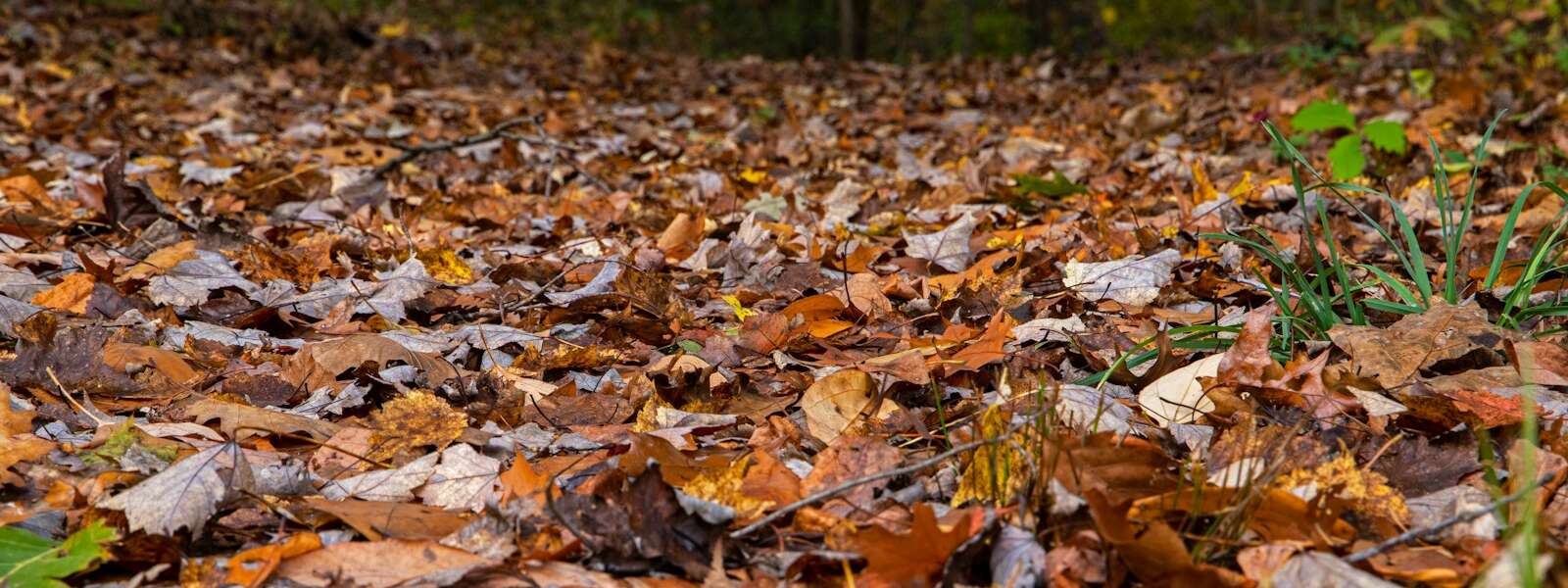
Most homeowners have been taught to rake the leaves off their lawn to keep it healthy, but leaving the leaves can also help pollinators. So, which is right? A University of Guelph turfgrass researcher suggests finding a happy compromise.
Dr. Sara Stricker, communications and outreach coordinator for the Guelph Turfgrass Institute (GTI), says simply leaving the leaves where they land on the grass can damage lawns, since the grass won’t be able to “breathe” underneath.
“Smothering and turf death can occur, especially if you cannot see any turf blades sticking through,” Stricker says. “Anything longer than three weeks of tree leaf coverage will undoubtably damage or entirely kill turfgrass, depending on how deep the leaf coverage is.”
One option to minimize lawn damage is mulching leaves with a lawn mower. The mulch pieces need to be less than the size of a dime, Stricker says, adding blades of grass should still be seen through the mulched leaves. Properly mulched tree leaves can act as a natural fertilizer.

Leaving leaf matter on the ground can benefit pollinators and increase biodiversity, Stricker notes, creating homes for insects and other wildlife. But she warns leaving a thick layer of leaves is not the best idea for lush, green turf. Instead, she recommends an option that maintains lawn health and helps pollinators thrive, something she does at her own home.
“Create a habitat in an area of your yard with low traffic,” she explains. “This can include wooden logs, hollow flower stems, leaves and stones. This biodiversity refuge would be most beneficial if left undisturbed year-round to allow for nesting and breeding as well.”
As for removing the leaves, Stricker says raking is usually recommended over a leaf blower, since it can help remove thatch and introduce air into the system. Leaf blowers are ideal for small leaves and cleaning up edges and are often considered the quicker and easier method for leaf removal.
She also recommends raking in the spring to gather up twigs and sticks that could damage a lawnmower or become a projectile.
Stricker is available for interviews.
Contact:
Dr. Sara Stricker
strickes@uoguelph.ca
